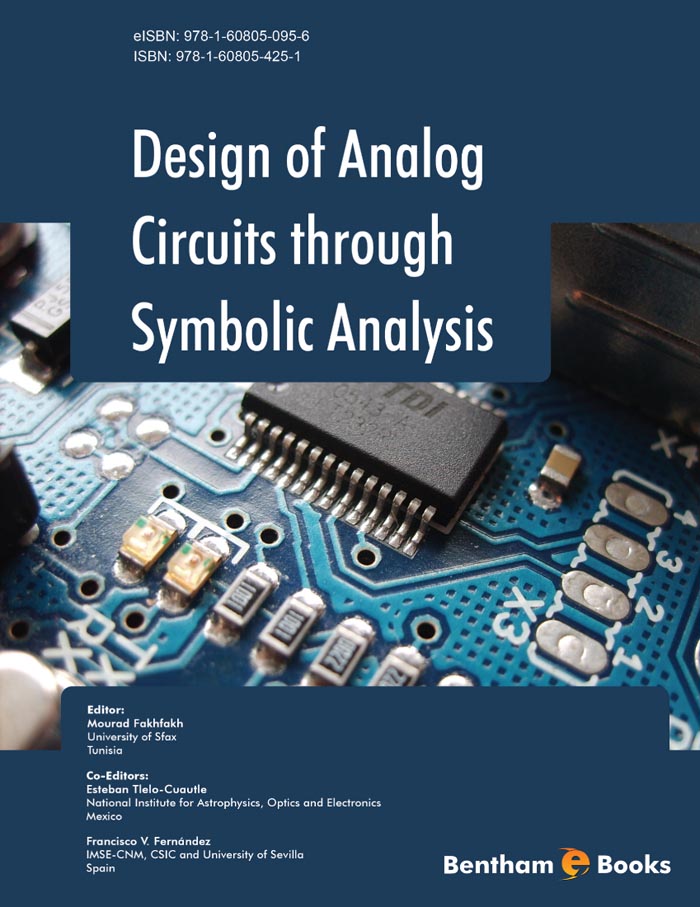Since the invention of the transistor and later on the integrated circuit, microelectronics has proven to be crucial as driver for innovation and welfare in our society. Many applications would not exist without integrated electronics. The computer, the digital media revolution (e.g. CD, DVD, mp3), the wireless communications, the internet, etc. would not exist without the relentless scaling progress and resulting performance improvement and cost reduction realized by microelectronics. In the near future this progress will continue even further with electronics contributing to reducing our energy consumption, enabling ubiquitous wireless monitoring and data streaming, invading daily objects networked in the internet of things, and even entering the human body.
In most of these applications the electronic systems interface with our physical world. Although the strength of electronics lies in the power of the digital compute engines that perform the signal and data processing, analog and mixed-signal circuits (or at higher frequencies RF circuits) are needed in the interfacing with the real-world signals. The current sub-100nm CMOS technologies even enable the integration of entire systems, including both the digital core and the analog interfaces, onto a single die (System on Chip) or into a single package (System in Package), offering even further cost and performance advantages. The inescapable use of analog circuits however poses some serious challenges. First of all, since the information is represented by continuous-valued signals, analog circuits are intrinsically vulnerable to all kinds of “interferences”, be it noise, process variability, crosstalk, etc. Secondly, the functionality and performance of analog circuits are a result of the complex interplay of many devices, the way how they are interconnected and their sizing and biasing. This makes the understanding of analog circuits and how they work quite complicated, and requires years from students and designers to develop the necessary insight and expertise. To assist them in this process, they mainly utilize the numerical circuit simulator SPICE (or any of its commercial implementations), which is indeed a great tool for design validation.
Symbolic analysis techniques offer a complementary way to analyze analog integrated circuits. Since the results of symbolic analysis are analytic equations that explicitly describe the functionality (e.g. transfer function, impedance, pole/zero...) of the circuit as a symbolic expression of the design variables, it lends itself more for designers to gain insight into the behavior of the circuit. Questions like “how does the circuit actually work?”, “at what node is the dominant pole located?”, “what is the relation between the bias current and the gain-bandwidth?”, “what is the impact of device mismatch on the PSRR of this circuit”, “which transistor(s) actually is the dominant noise source?”, “which nonlinearity is creating the most third-order distortion?” etc. can be answered by means of symbolic analysis. Originally hampered by the exponential complexity of the symbolic analysis problem, approximation techniques that typically exploit designer intent or common design practice had to be developed to make the results interpretable for humans. Symbolic expressions are however also useful in many other applications that require the repeated evaluation of circuit characteristics for a wide range of parameter values, such as for example encountered in circuit optimization or in yield analysis. Not requiring interpretation by humans, a wide range of efficient algorithmic techniques has been developed in the past years to overcome the complexity issue
and to make symbolic analysis tractable for circuits of practical size.
This edited book provides an overview of the current state of the art in symbolic analysis. The editors have compiled chapters from the key contributors to the field of symbolic analysis. These chapters neatly describe the latest results in terms of algorithms as well as applications of symbolic analysis techniques for analog circuits. Recent algorithmic improvements highlight the potential of today’s symbolic analysis methods, both in terms of circuit complexity and of circuit characteristics that can be analyzed. The second part of the book presents the wide span of applications that utilize symbolic analysis, ranging from behavioral and performance modeling over design centering and fault diagnosis to automated design and system architectural exploration. These chapters clearly demonstrate the potential of symbolic analysis for analog circuits, in complement to or in combination with numerical simulation techniques.
This combination of state of the art information about algorithms and applications makes this book highly recommended reading for everyone interested in using symbolic analysis towards electronic circuit design, be it to improve his/her insight in circuits or for any of the other applications. The many circuit examples used throughout the whole book nicely illustrate the capabilities, and both circuit designers and CAD professionals will benefit from this information. Please enjoy reading this book.
Prof. Georges G.E. Gielen
Katholieke Universiteit Leuven
Belgium

